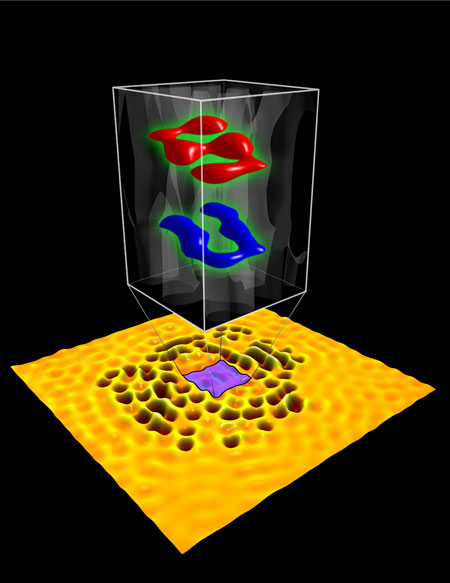Musical Training Helps Scientist Hear Atoms' Movement

Editor's Note: ScienceLives is an occasional series that puts scientists under the microscope to find out what makes them tick. The series is a cooperation between the National Science Foundation and LiveScience.
Researcher: Hari Manoharan Age: 40 Institution: Stanford University Field of Study: Physics/Nanoscale Science & Technology
In honor of Nano Days this week, we’re featuring one of the leading researchers studying the nanoscale world. With his colleagues at Stanford University, Hari Manoharan recently created the world’s smallest letters – an S and a U, for Stanford University – each only one third of one billionth of a meter across and crafted from a flow of electrons on a copper surface. The feat was critical to prove that you can store more than one bit of information in an atom, as the new study showed that a single electron, a subatomic component of an atom, can store 35 bits of information. The results, along with video, can be seen in a recent NSF press release. Manoharan answers the ScienceLives 10 questions below. What inspired you to choose this field of study? I like to work with my hands and build things and I’m always interested in looking at things you can’t see with the naked eye, and our research is a combination of that. What we’re working with is really small and there is no other way to see it than to use the instruments that we meticulously built. We build things at this really small scale, and moving atoms is the smallest scale at which you can build things, although instead of our hands we use the tip of a scanning tunneling microscope. What is the best piece of advice you ever received? As a student the best advice I received was to follow what your interests are, to follow the things that you care about most and in doing that I moved around to a lot of different places and that’s why I ended up here at Stanford. What was your first scientific experiment as a child? I was always building things as a child and always using my hands. I used to build Meccano sets. You call them Erector sets in the U.S. I built these sets with little motors that would move things, and I built a robot arm. When I was a kid in my family we had to build whatever we wanted, I remember we built our own TV. What is your favorite thing about being a scientist or researcher? What I enjoy most is the exploration of the unknown, to be able to thrill and to be at the frontier at what’s known and unknown and to play a role in moving that frontier. What is the most important characteristic a scientist must demonstrate in order to be an effective scientist? Tenacity and creativity. What are the societal benefits of your research? At a higher level we’re exploring nature at very tiny scales. You could look at this as exploring new terrain, but instead of going out to another world or to the bottom of the ocean we’re going down to a real tiny scale and looking around to find out how the small world changes. We’re learning something new every day about the natural world that you can’t see but that underlies all of our existence. At the applied level our whole society is based on information and how we communicate and store knowledge and the way we use computers. Our progress over the last several decades is due to technology and technological information. And so what we are doing helps progress over the years as computers get small and smaller and faster and faster. Our research looks at how much smaller can we make computers and how can we help processing information even faster, and that is a tremendous benefit to our society. Who has had the most influence on your thinking as a researcher? I’ve had a lot influence from musical training in my past. It taught me patience, and listening to sounds has come up again and again in our research in ways that would not have come up without the musical training I had. We actually listen to atoms move when we do our experiments. We hear different atoms when they are moving. They make little sounds as if they are small quantum drums, so music has played a role. What about your field or being a scientist do you think would surprise people the most? I think people would be surprised at how we go about our daily work. For example, we have a research project but often we don’t know about how to answer questions. We don’t have a well defined agenda, a lot of the time we’re as confused as everyone else. The fun part is that we don’t know the answer and we’re often bewildered, but then learn as we find the answers. If you could only rescue one thing from your burning office or lab, what would it be? I would rescue our servers — our data. What music do you play most often in your lab or car? I like to listen to loud guitar music, instrumental guitar music like Joe Satriani. I used to play guitar in a band it was called, “Me Time.”
- Video - Creating the World's Smallest Letters
- Nanotechnology: News and Information
Sign up for the Live Science daily newsletter now
Get the world’s most fascinating discoveries delivered straight to your inbox.









